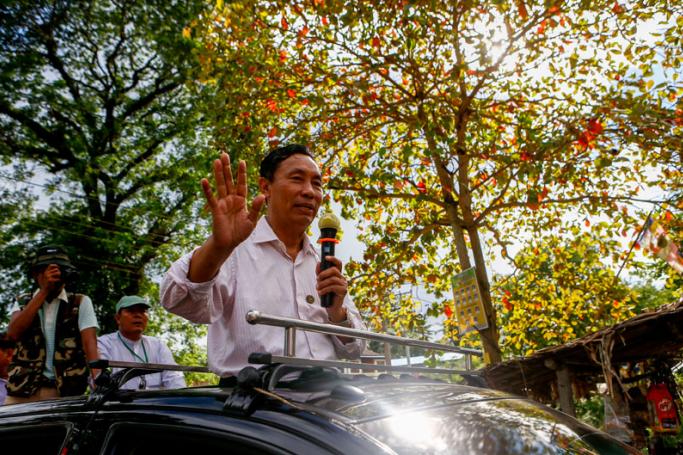Documents obtained by Mizzima include the unreleased reformist manifesto of former USDP Chairman Thura U Shwe Mann and internal polling data which show that a “worst case scenario” for the USDP could see them annihilated in the upcoming election.
The manifesto, developed by a team of advisors working with Shwe Mann outlines 15 policies that the USDP was to make the basis of their current election campaign.
The reformist development plan outlines four stages, entitled “Seed, Plant, Grow, Harvest,” laying out Shwe Mann's 10 year vision that sees Myanmar develop into a “middle-income” economy by 2025.
The manifesto refers to the “Grow” stage (2016-2020), which covers the implementation of major policies and the “Harvest” stage (2020-2025), benefit realisation, as the two phases critical in Myanmar's development.
“By 2020, we see a real and lasting peace across all our States and Regions. We see a country where democracy is accepted as a normal part of our everyday lives,” the document reads.
The document, if effect, makes the assumption that the USDP will remain in power through to 2025.
The team also compiled polling analysis which makes two predictions for the upcoming election. In a 'Worst Case Scenario' the USDP would be reduced to only 16 seats in the Pyithu Hlutaw (House of representatives), with the NLD and Ethnic parties making up the numbers, whilst a more favourable “manual prediction” sees the USDP left with 105 seats trailing just behind the NLD with 117.
U Aung Thein Linn, a former Central Executive Committee (CEC) member who was sacked from his post along with Shwe Mann in August, said it was “impossible” that the USDP would only win 16 seats. “We can win nearly 50 percent throughout the whole country,” said the former general, who is hoping to be re-elected to his seat in Yangon’s South Okkalapa township.
Both of these documents have been verified by sources who requested anonymity due to the sensitivity of the issue. They told Mizzima that the reformist manifesto was set to be released as part of Shwe Mann's campaign launch on August 13.
Shwe Mann was infamously ousted in an internal coup at party headquarters in Nay Pyi Taw on the night of August 12.
A team, commissioned by Shwe Mann, reportedly began drafting the manifesto in October 2013.
The group met with Shwe Mann every two months to discuss the terms of the policies. This resulted in several revisions which were then presented and approved of by core members of the CEC.
Some policies developed for the manifesto were not shown to the CEC and were not intended for public release as they were deemed too sensitive. Specifically they related to the reformation of Military-linked conglomerates for the benefit of the people and the amalgamation and modernisation of police forces.
There is speculation that Shwe Mann's relationship with President U Thein Sein had deteriorated in the months leading up to the August coup. His reformist policies and an increasingly cordial public relationship with opposition leader Daw Aung San Su Kyi provoked opposition from factions within the USDP who are closely aligned with the Military, leading to his ousting as party chairman.
With a clause in the constitution barring Daw Aung San Su Kyi from the presidency, Shwe Mann was widely looked as favourite to take on the presidency with the joint backing of the NLD. He is still eligible for the role as a member of the USDP.
Additional reporting by Joshua Carroll
Secret USDP document predicts potential USDP annihilation in the elections
09 October 2015
Secret USDP document predicts potential USDP annihilation in the elections












